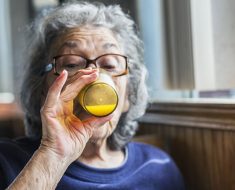Producing the T lymphocytes that are increasingly being used to fight cancer and other diseases may soon be faster and more efficient, thanks to research being conducted at the University of British Columbia, in Vancouver, Canada.
Investigators found that adding the human proteins DLL4 and VCAM1 — rather than using traditional animal products — during a key cellular transition phase enhanced downstream output of progenitor T cells from pluripotent stem cells (PSCs) about 80-fold. The recombinant human proteins targeted the endothelial-to-hematopoietic (EHT) phase of development. If scaled up, the new process could substantially increase the availability and affordability of personalized T-cell immunotherapy.

Dr Yale Michaels
“Our goal is to be able to take cells from human donors, genetically modify and produce them in high numbers, and then store them in the freezer for off-the-shelf medicine,” study author Yale S. Michaels, DPhil, postdoctoral fellow in biomedical engineering, told Medscape Medical News. “We think our technique will be ready for trials in humans within a couple of years.”
The findings were published online August 24 in Science Advances.
Two Key Proteins
Chimeric antigen receptor and engineered T-cell receptor T cells have demonstrated high clinical efficacy against some cancers. They also show promise for treating infection and immunologic disorders and for preventing transplant rejection, the authors write.
But sourcing these therapeutic cells from individual donors is costly and laborious, they add. Inter-donor variability and intra-donor heterogeneity make the production and quality control of personalized T-cell therapies challenging. The efficacy rate of this type of therapy is close to 50% for some cancers, but a new batch must be created for each treatment, and the cost is about half a million dollars each round, according to the researchers. Using PSCs to create immune cells in the laboratory could facilitate the derivation of hundreds of doses from a single cell.
Differentiating PSCs specifically into hematopoietic progenitors with T-cell potential remains difficult. “How to make the right type of cells from PSCs in the lab has been really challenging,” said Michaels. “Previously, shepherd, or guide, cells from mouse cell lines or cow serum were used, but these shepherd cells produce so many different factors and components that it was hard to understand the minimum signals necessary to do the required job.”
Michaels and his team believed that a pathway called notch signaling, which DLL4 and VCAM1 help to activate, would be important in the development of differentiated blood cells. As it turns out, VCAM1 cooperates with DLL4 to enhance the magnitude of notch signaling during the EHT culture phase. “We set out to understand the minimal signaling requirements for generating hematopoietic progenitors with T-cell potential from human PSCs,” said Michaels.
The investigators coated lab Petri dishes with the DLL4 and VCAM1 proteins and added stem cells and growth media to foster the growth of blood cells with T-cell potential. “Production became faster and more efficient. As an added advantage, without the use of animal products, manufacturing can be done in a quality-controlled way that is easy to replicate and will make it suitable for clinical use,” said Michaels.
Unexpectedly, the investigators also found that VCAM1 promoted inflammatory-responsive gene expression in hematopoietic stem cells. Studies in zebrafish and mice have shown that inflammatory signals are important for the emergence of these cells, both upstream and downstream of the notch pathway, they note.
“A Significant Step”
Offering an oncologist’s perspective, Cassian Yee, MD, a professor of melanoma medical oncology and immunology at the University of Texas MD Anderson Cancer Center in Houston, agreed that ultimately, the goal is to prescribe off-the-shelf treatment with T cells designed for a given cancer type and stage. “The method described by Michaels et al is a significant step in that direction,” he told Medscape. The technique “utilizes well-defined reagents that could likely be rendered clinical-grade compatible for ex vivo manufacturing and is able to produce a diverse T-cell repertoire.” Yee was not involved in the current study.

Dr Cassian Yee
But many steps remain before that goal is reached, Yee cautioned. Among them are identifying and engineering T cells with the desired specificity, enriching and expanding them efficiently from a PSC-derived product with the desired intrinsic properties, and achieving scalability. “But I believe that ultimately, these issues are all addressable and this technology opens the door a little wider to that possibility,” said Yee.
The research was funded by Notch Therapeutics, the Stem Cell Network Fueling Biotechnology Partnerships, the Canadian Institute for Health Research Foundation, and the Wellcome Leap Human Organs, Physiology, and Engineering program. Michaels is an inventor of patents relating to T-cell differentiation and consults for regenerative medicine companies, including Notch Therapeutics. Yee sits on the advisory boards of several cell therapy companies, but none are engaged in research relevant to his comments.
Sci Adv. Published online August 24. Full text
Diana Swift is a medical journalist based in Toronto. She can be reached at [email protected].
For more news, follow Medscape on Facebook, Twitter, Instagram, and YouTube.
Source: Read Full Article





